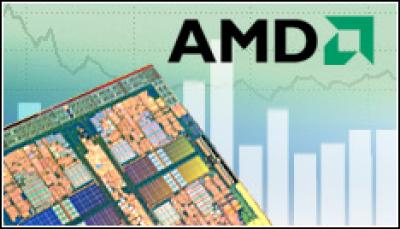AMD Looks To Efficient Chips For Profitability

AMD officials say the recession could play to the strengths of the Opteron EE by giving enterprises the option of extremely efficient systems that can save money on the bottom line
Advanced Micro Devices, which for years has made energy efficiency and performance-per-watt cornerstones of its processor development, is lowering the power consumption of its Opteron server chip.
AMD April 22 is rolling out the Opteron EE processor, a 45-nanometer quad-core chip that offers similar features as the other Opteron chips but comes in a 40-watt thermal envelope.
The Opteron EE is aimed at dense server environments, such as cloud computing, according to John Fruehe, director of business development for AMD’s server and workstation business. It hits on what AMD officials say is the greatest concern of enterprise IT—solid performance in an efficient, low-power environment rather than simply getting all the performance possible.
“Customers are looking more at energy efficiency, saying it’s a lot more important than raw performance,” Fruehe said in an interview.
The Opteron EE takes over from the 55-watt Opteron HE as the lowest-power AMD server chip. AMD also offers Opterons at 75 and 105 watts. The EE comes with clock speeds of 2.1GHz and 2.3GHz.
Fruehe said that AMD was able to achieve the lower power while keeping the key features, including the company’s Direct Connect integrated memory controller technology, AMD-V features for virtualization, and the ability to scale while keeping power consumption and thermal output low.
It also the features offered in what AMD is now calling its AMD-P suite, a marketing strategy of putting its key power features under a single umbrella. The features include Smart Fetch, which enables idle processing cores to be put to sleep to conserve energy; CoolCore, which reduces the power to unused parts of the processor; and PowerCap, which sets limits on a processor’s speed and voltage.
The Opteron EE “has all the same features [as other Opteron models], but with enhance energy efficiency,” Fruehe said.
AMD’s newest Opteron chips come at a particularly challenging time for the chip maker. Not only is the global recession ravaging the server market—as well as most sectors of the high tech industry—and causing IT budgets to severely contract, but rival Intel is also in the middle of the staggered rollout of its new Nehalem chip architecture, which aims to ramp up performance while improving energy efficiency and reducing costs to IT departments.
Intel most recently rolled out the Nehalem EP chips—also called the Xeon 5500 series—for two-socket systems, and is expected to announced the Nehalem EX for servers with four or more sockets later this year. A key component of the Nehalem architecture is an integrated memory controller similar to what AMD offers in Opteron.
In addition, AMD is dealing in a server space that is seeing its share of consolidation, most recently the announced deal by Oracle to buy Sun Microsystems, a major user of AMD technology. Sun’s systems have a better chance of surviving under Oracle than under IBM, another hardware company that was rumored a few weeks ago to be in the hunt to buy Sun. However, nothing about the future of Sun’s hardware business is clear.
AMD is also continuing its efforts to return to profitability. The chip maker announced April 21 that it lost $416 million (£283m) in the first quarter, though AMD officials were upbeat about the company’s prospects.
AMD is “putting a premium on power” with the Opteron EE, said John Spooner, an analyst with Technology Business Research.
“[AMD is] saying, ‘Look, the recession is temporary. It will end. When it does, enterprises will still care about how much power a server consumes,’” Spooner said in an e-mail. “So it’s delivering a processor that uses less power but delivers more mainstream performance. It’s really trying to be the best of both worlds, without breaking the bank. (Even if AMD will charge a premium for these chips vs. its standard machines.)
“Just to put the premium into perspective, upgrading to these chips will add a few hundred dollars to the price of a new server, whereas adding significant amounts of memory—say, upgrading from 64 GB to 128 GB—would cost thousands.”
The key for AMD right now is timing, Spooner said.
“AMD could use that business right now, not next year,” he said. “But a lot of the businesses who could benefit from the Opteron EE, right now, are in a holding pattern in terms of spending. That may start to free up in the next couple of quarters, but it’s going to be slow going in the server business until at least the second half of 2009.”
Fruehe said he expects that in such tight budgetary times, systems that offer the greatest efficiency will be particularly attractive to IT buyers.
“With budgets really tight, having really efficient servers that save money is attractive,” he said.